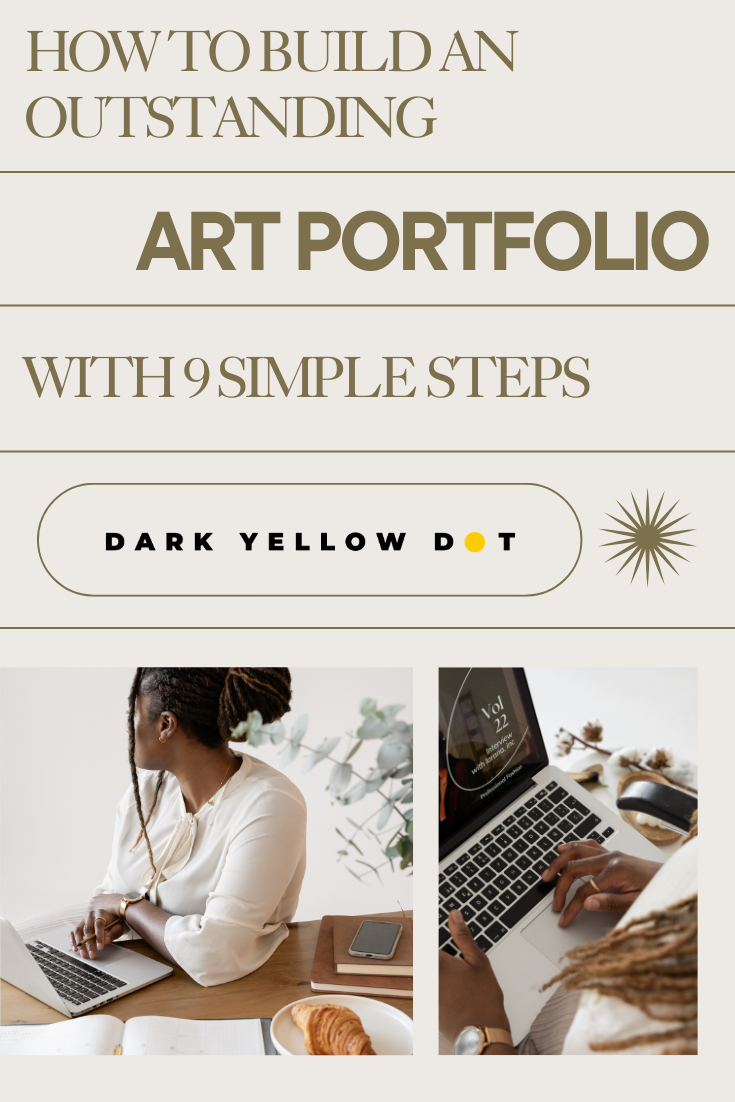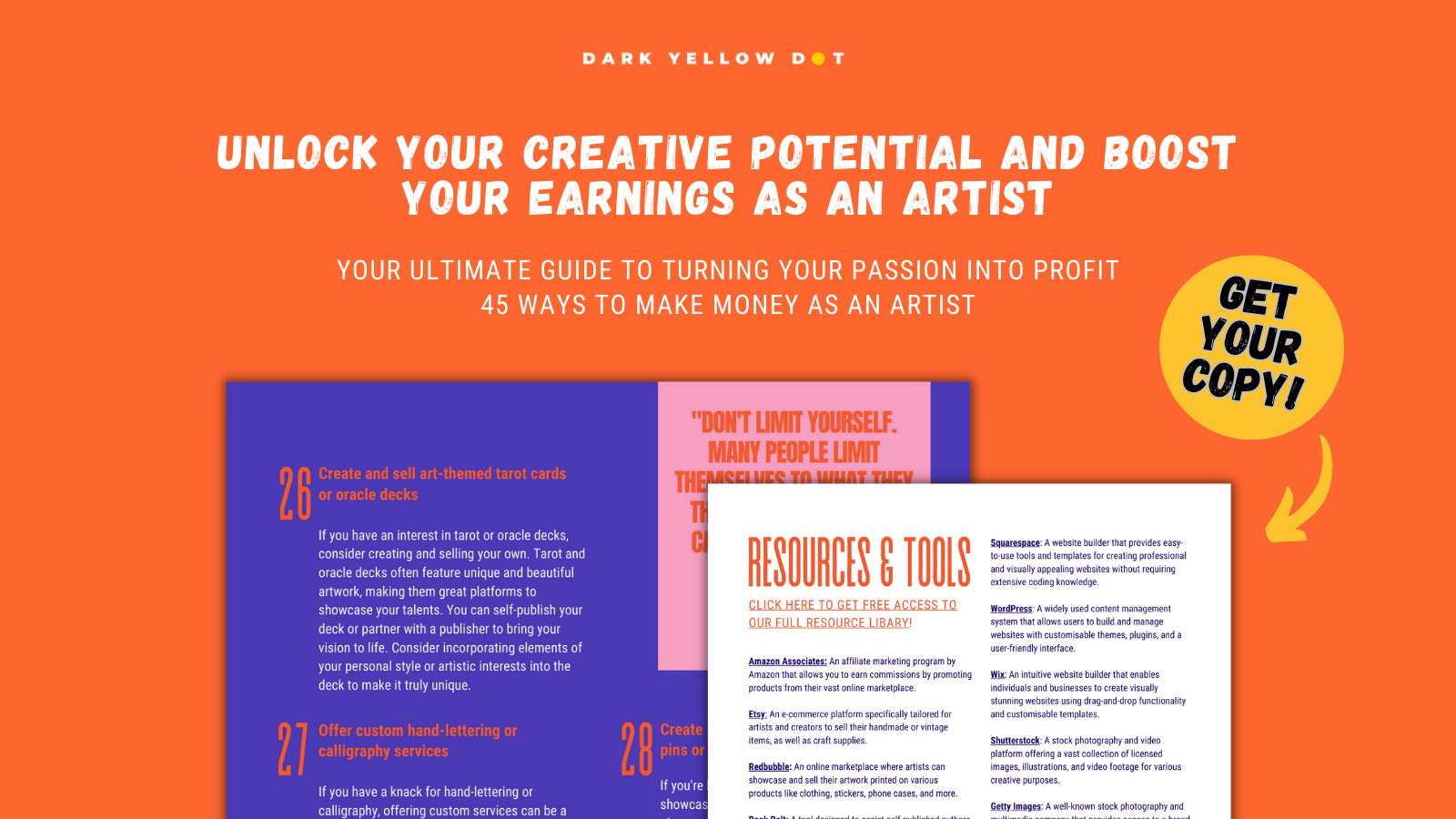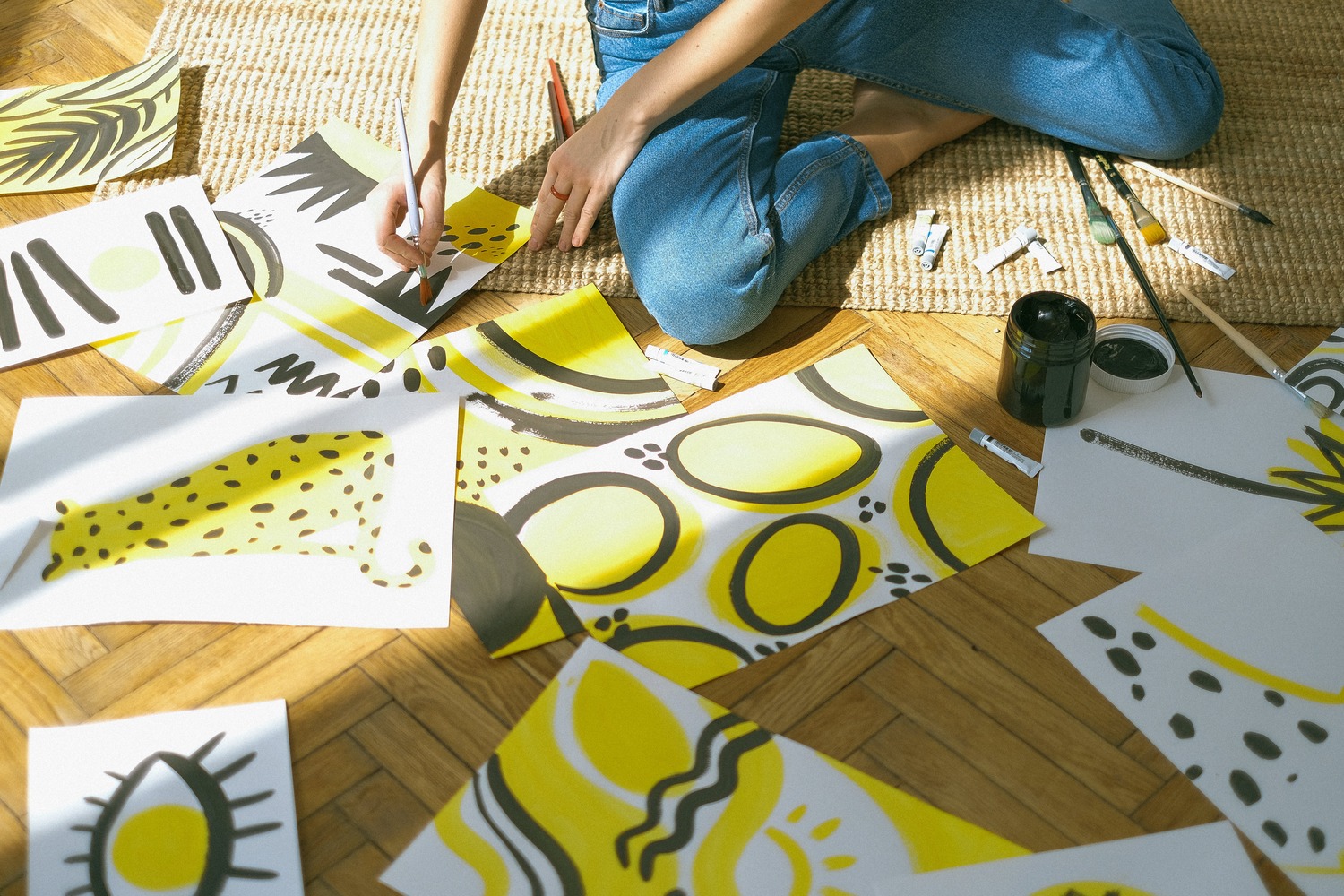


How To Build An Outstanding Art Portfolio With 9 Simple Tips
Heads up: This post may contain affiliate links. Learn more.
Make The Best Art Portfolio With This Easy Artist Guide
Artists at many points of their careers are asked to explain what it is they do. Sometimes this explanation is verbal or may even require a formal written piece, though most often you’ll be asked to show a physical portfolio of your artwork. You may be sending applications to schools, applying for a job or entering open calls and other art opportunities. Make a big impression with your art portfolio by presenting your best work in a professional yet exciting way to have the highest chance of success.
I should preface, that my art school portfolio was accepted to a great University art programme in Canada and the application process, like any, was gruelling.
In fact, I put all my eggs in one basket and just applied to one school – something that isn’t widely recommended. Luckily, my art portfolio was accepted and I even won the Entrance Award of $1000 which only went to one art applicant per year. That was a few years ago now and my portfolio has changed alongside my practice and life.
Since then I’ve had to submit other art portfolios for various art jobs or freelance projects. I was an art teacher at both secondary and University level, so as result – I’ve helped prepare my art students for success by giving them great projects that can to be used to create an outstanding art portfolio.
Here are a few ways to consider how you can make an impact with a great art portfolio that has the best chance of being accepted to whatever you’re applying to.
What is an art portfolio?
The University of Arts London describes a portfolio as a collection of your work which shoes how your skills and ideas have developed over a period of time. It demonstrates your creativity, personality, abilities and commitment – helping to evaluate your potential.
Creative fields or careers such as fashion design, web design, graphic design, fine art and digital media require an art portfolio or a as the first step when applying to opportunities.
An art portfolio can take many forms, depending on what you require it for. Online applications will usually ask for a digital portfolio in a PDF format whilst interview may require a physical copy. Then there’s the type of online artist portfolio that the public have access to, which almost every artist should have. You can make these on social media platforms like Instagram or create your own site using an artist website builder.
What does an art portfolio consist of?
An art portfolio should contain a selection of your best and most recent work. The work you choose to show should represent where you’re at with your practice whilst demonstrating the range of skills and ideas that you possess.
You may need to alter your portfolio for each application that you use it for. The organisation you’re applying to should outline a set of requirements in the application process that each individual will need to follow. In some cases, art schools may even share older art portfolio examples. Make sure you read through everything thoroughly to get an exact idea of what they want to see, but here are some general guidelines to help:
Finished Work
Art organisations are obviously going to want to see examples of your finished work and projects. These pieces depend on your individual practice, but consider the range of work you could show, like paintings, sculptures, art installations or films. For pre-degree and undergraduate courses in particular, you’re not expected to have completely figured out your art style or preferred processes. For that reason, it’s beneficial to show that you’re experimental and willing to try lots of different things.
Not all organisations want or need physical or original pieces in the early stages of an application, so don’t send them it if they didn’t ask. However, it’s not uncommon for art organisations to ask to see your originals at interview stage because it can reveal a lot about your process and techniques when they need to make a decision. This is great for artists who have a specific texture to their work that can only be realised in person – the type of detail that may not be sufficiently represented in digital format.
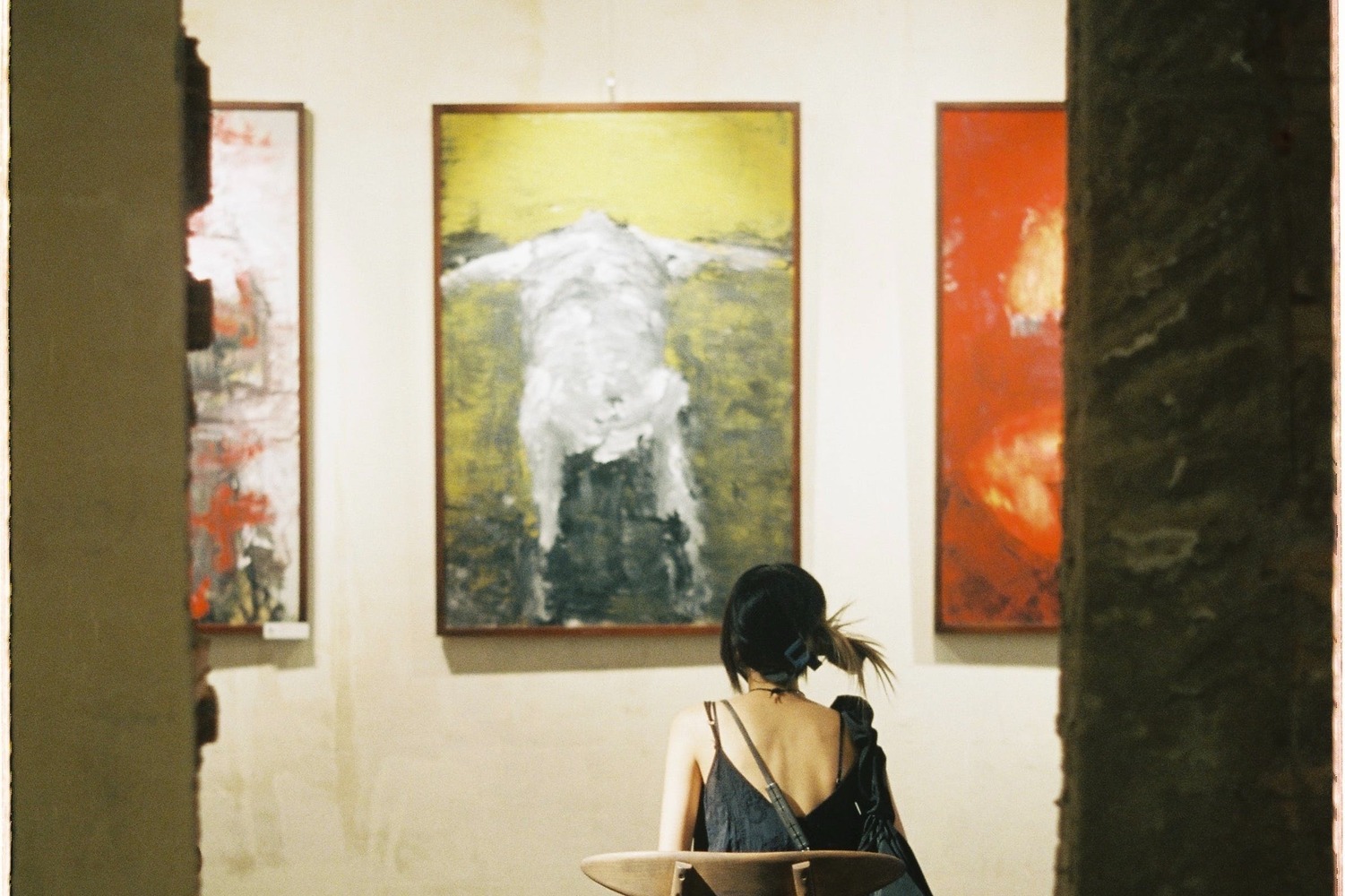

Ideas and Processes
Alongside your finished work, an art portfolio request may also ask for your ideas or works in progress. This can be in the form of sketchbook pages, mood boards, visual research, experimentations and idea processes. Don’t worry about this being the best work you’ve ever done – but be selective when considering how the ideas add to the story you’re trying to tell. The organisation will want to get a sneak peak into your way of working and an insight into how you’re able to develop your ideas from concept to reality. Back up your polished pieces with supporting material that demonstrates your artistic journey. This is particularly relevant for undergraduate degree applications.


Physical Art Portfolio vs Digital Art Portfolio
On certain occasions, you may be required to send physical, hard copies of your art. Make sure you scan or take pictures of your pieces before you send your art portfolio. Sometimes you may not receive your portfolio back, so be sure to make a digital and printed copy for yourself first. It’s also good to know what pieces you submitted as a reference for when you receive an acceptance decision.
Even if your work is primarily digital or online – you may need to send hard copies. Find a good printer shop near you and ask to see the various paper qualities they have in stock. I recommend printing on semi-gloss or matte card stock using a laser printer or get it printed as giclee print. There are a bunch of printing services you can use, but making art prints yourself is also very possible.
Whether your portfolio is digital, original, printed or online – it should have a professional look and feel. If you are printing photography, then I recommend a semi or high gloss print on photo paper. You want the paper to be flexible, but not flimsy, and you’ll always want the printing to be at the highest quality.
If they ask for a digital version of your pieces, make sure your image size and pixels are large enough to be clear and find out what format your files need to be. Make sure you’re photographing your art properly and avoiding common editing mistakes. You want the art piece to be the focus.
What mediums and themes should you include?
The themes that you include within your art portfolio depend on what you’re interested in. Pre-degree courses will usually implement broad project ideas so that students can tackle a wide variety of ideas. It doesn’t matter too much about what your art communicates – as long as you demonstrate how you’ve researched and experimented fully with the topic. It can be difficult to find inspiration in the beginning, so consider trying some unique art prompts to help build a well balanced portfolio.
Drawings and Paintings
These will be a popular inclusion in all art portfolios, so make sure yours stands out. Art school applications like drawing material within your art portfolio because it demonstrates fundamental skills and tends to be a basic measure of someones observational abilities. With paintings, artists can showcase their ability to use light and colour.
Photography & Design
The photography within your portfolio doesn’t need to be limited to documentation.Don’t be afraid to experiment with photography, showing use of your composition and technical skills. Be innovative with your ideas, explore technology and think outside of the box.
Sculptures & Installations
Including sculptures and installations within your portfolio is possible and very recommended. Make sure to take good quality images that show the piece from multiple angles, capturing it in the best possible light.
Film and audio work
When applying online, the art organisation might provide a portal system where files other than images can be uploaded. Here, you should be able to include film or audio work, but be sure to check file requirements. If not, take some stills from your film and provide an external link to a YouTube video where the piece can be watched instead.
How many pieces should I include in my art portfolio?
When it comes to physical art portfolios, don’t include pieces that are too big to send. Double check the mailing restrictions and don’t go over the maximum. This information should be readily available within the application guidelines. If you are asked to show a specific number of pieces in your art portfolio – make all of them your best work.
Don’t worry too much about having 20 pieces in there if they asked for 10-20. Quality is better than quantity. If you’re able to curate a varied, interesting and impressive portfolio in just 12 pieces, then it shows you are selective and thoroughly understand your art practice.
Art Portfolio Tips
1. View it from someone else’s perspective
Do you show evidence of technical skill? Do you clearly have an eye for detail? Does your work have a narrative or tell a story? Do you show a broad range of skills, mediums and ideas? Consider these things when you decide what to include. If someone was to view this portfolio with no idea of your practice beforehand – what impression would they gain?
2. Follow instructions carefully
You may be asked to submit works based on a particular assignment or outline. Some organisations allow you to choose from a selection of multiple assignments. Other times you’re free to select any one of your best pieces.
You’ll be surprised how many people have their applications rejected based upon silly mistakes like file formatting and size. Make sure you avoid these errors by reading over the criteria carefully. It’s also a good idea to have someone check the requirements against your portfolio just in case.
3. Have a solid portfolio that you can adapt
Different applications are going to require different things from your art portfolio – so it’s normal for you to make adjustments each time. For this reason, it might be beneficial to have one solid version of your portfolio that can duplicate and edit accordingly. That way, you won’t have to make a new one from scratch everytime or risk losing the first version in its original state.
4. Take creative risks
The organisation you’re applying to is likely to receive hundreds of portfolios. Make yours stand out by using their art prompt and letting your creativity fly. The best portfolios are the ones that demonstrate strong skill and talent whilst remaining experimental and innovative.
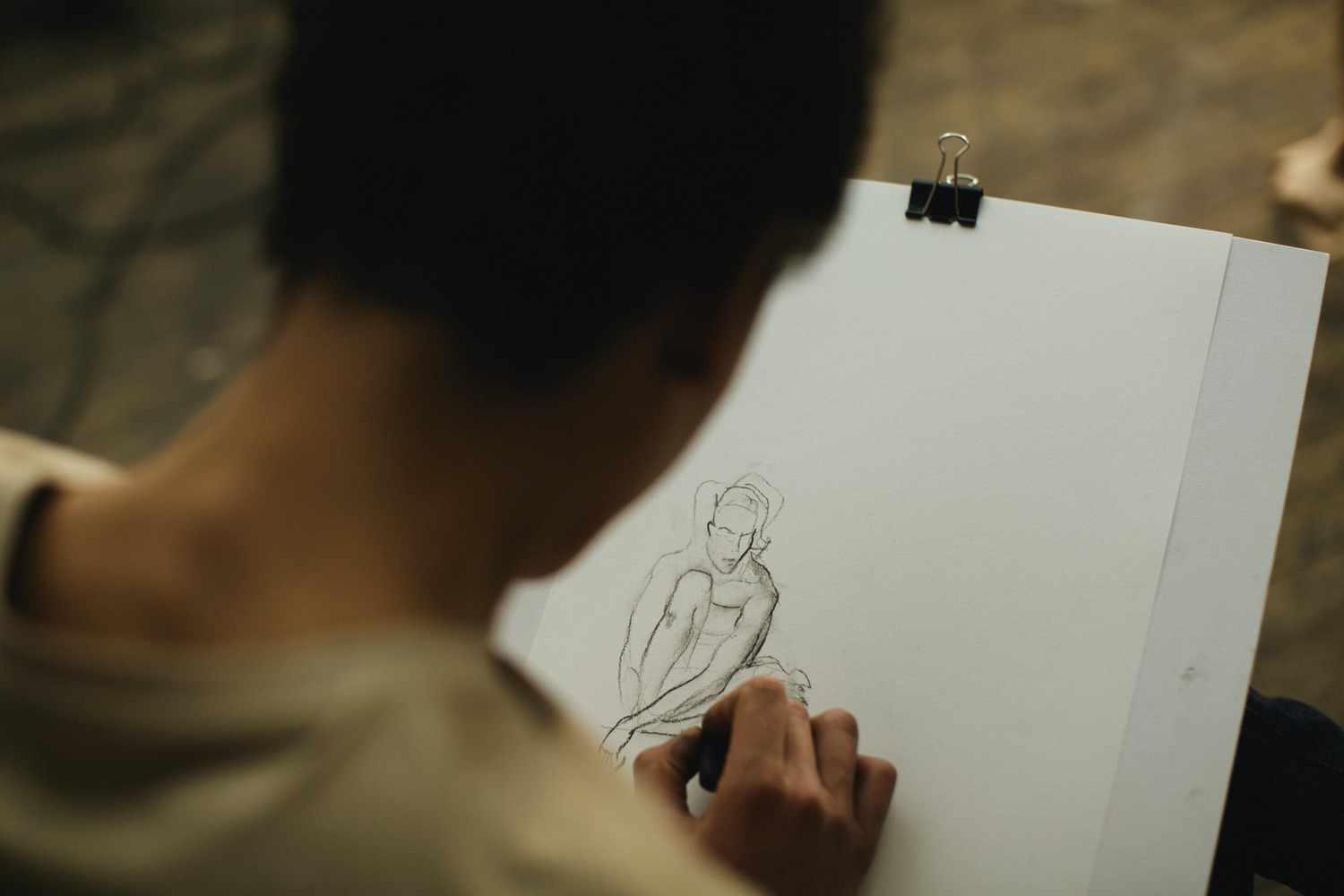

5. Don’t Copy
If you are looking for reference photos, don’t use Google images. Using some Google images may be considered as copyright infringement and you really don’t want to get involved in that stuff. Just be safe and leave it alone. Use stock free images from websites like the ones below or use a drawing reference book to get some ideas.
6. Show your personality
Come up with your own unique ideas and show the decision makers your individuality by approaching subjects or subject matter in a fresh way. Use your artwork to represent your strengths, intellect, and creative experiences. Do you!
7. Art Portfolio Examples
It’s a good idea to take a look at other accepted portfolios to get some ideas on how can you improve yours. Sometimes the college or University you’re applying to won’t provide successful examples directly – but a quick search online will bring up lots of useful content.
8. Presentation is everything
Make sure your original art work, prints, or slides are completely free of dust and finger prints! Use a clean paper towel or cheese cloth to wipe away any unwanted marks. Paper and prints should be wrinkle, fold and smudge-free.
If your art portfolio is online, consider the order of your work. It’s useful for your work to follow a timeline, indicating the ways you’ve developed and progressed overtime.
9. Label your artwork correctly
Some organisations have very specific ways they want you to label the pieces, whether that is a file name or a written list of artworks. Follow their instructions exactly to avoid trouble further down the line.
HOW DO YOU FIND YOUR ARTISTIC INSPIRATION? LET US KNOW IN THE COMMENTS BELOW.
Also, don’t forget you can always share your art with us for a chance to be featured on our Instagram – @darkyellowdot.
Thank you for reading and if you found this article useful, share it around, that makes us happy. To receive more posts like this and updates, join our mailing list, everyone is welcome.
NEED MORE ADVICE?
ARTICLES TO HELP:
How To Write A Super Artist Bio Using This Example
How To Create And Use The Perfect Artist Signature
Is An Art Degree Really Worth It?
SITES TO HELP:
COURSES TO HELP:
Design The Job You Want: Personal Projects To Build Your Portfolio
Live Encore: Creating The Perfect Portfolio
Art Portfolios Made Easy With Canva
